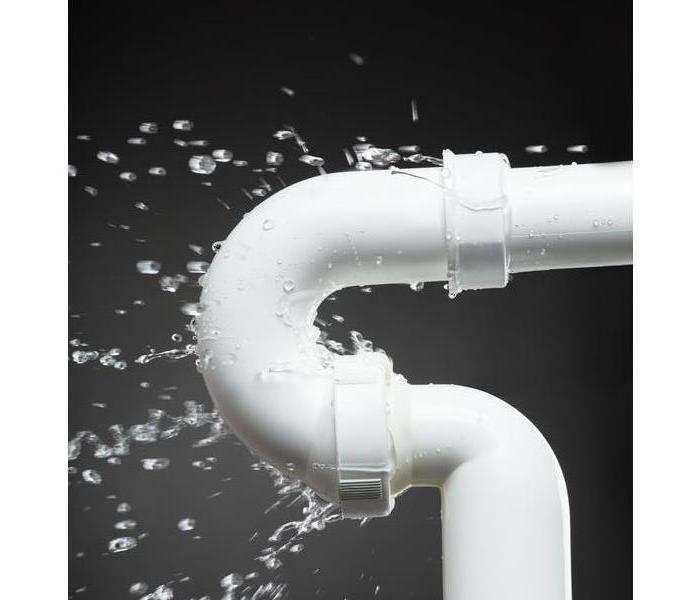Busted pipes can bust the holiday season
11/20/2020 (Permalink)
When temperatures plummet, the risk of your pipes freezing and bursting skyrockets. In fact, burst pipes are one of the most common causes of property damage during frigid weather and can cause thousands in water damage—easily $5,000 or more, according to the Insurance Institute for Business and Home Safety.
The pipes most at risk are those in unheated interior spaces such as basements, attics, and garages. But even pipes running through cabinets or exterior walls can freeze. The good news is there are some simple things you can do to keep your water running and your house dry.
“Pipe insulation can cost as little as 50 cents per linear foot at your local hardware store,” says Susan Millerick, IBHS spokeswoman. “So for not much more than the cost of the aspirin you’d need, you can avoid the headaches of cleanup, loss of precious keepsakes, and the cost of your insurance deductible.” Use the pipe insulation liberally to protect any vulnerable pipes.
How to Beat the Freeze
Once the temperature starts dropping outside, you should take measures inside to keep your pipes warm and water running. Research conducted by the Building Research Council at the University of Illinois shows that the “temperature alert threshold” is 20° F, especially if you have uninsulated pipes running through an uninsulated space.
Some of the steps experts recommend may go against your better instincts of conserving water and heat, but the extra expense is nothing compared with a hefty repair bill. Here’s what to do:
Keep garage doors closed, especially if there are water supply lines in the garage.
Open kitchen and bathroom cabinet doors to allow warmer air to circulate around the plumbing, especially if your sinks are on an exterior wall. (If you have small children, be sure to remove any harmful cleaners and household chemicals.)
Let the cold water drip from a faucet served by exposed pipes. Running water through the pipe—even at a trickle—helps prevent pipes from freezing.
Keep the thermostat set to the same temperature during day and night. Again, during a cold snap is not the time to set back the thermostat at night to save a few bucks on your heating bill.
If you plan to be away during cold weather, leave the heat on in your home, set to a temperature no lower than 55° F.
For the long term, add insulation to attics, basements, and crawl spaces. Insulation will maintain higher temperatures in those areas. And to prevent drafts, seal cracks and openings around windows, doors, and at sill plates, where the house rests on its foundation.
How to Thaw Frozen Pipes
If you turn on a faucet and only a trickle comes out, you may well have a frozen pipe. “If you suspect the pipes are frozen, be careful when thawing them out because if the pipe has already burst, the water will come flowing out and flood your home,” says John Galeotafiore, who oversees Consumer Reports’ testing of home products and power gear.
If a pipe has broken, turn off the water at the main shutoff valve, which is usually at the water meter or where the main line enters the house. If the water is still running and no pipes have burst, you can take the following steps. (Of course, if you suspect a more serious problem, call a plumber.)
Turn on the faucet. As you heat the frozen pipe and the ice plug begins to melt, you want the water to be able to flow through. Running water through the pipe, as cold as it is, will help melt ice in the pipe.
Apply heat to the section of pipe using an electric heating pad wrapped around the pipe, an electric hair dryer, or a portable space heater (kept away from flammable materials), or by wrapping pipes with towels soaked in hot water. As tempting as it may be, do not use a blowtorch, a kerosene or propane heater, a charcoal stove, or any device with an open flame; the high heat can damage the pipes or even start a fire.
Apply heat until full water pressure is restored. Check all other faucets in your home to see whether you have additional frozen pipes. If one pipe freezes, others may freeze, too.
Call a licensed plumber if you are unable to locate the frozen area, if the frozen area is not accessible, or if you cannot thaw the pipe.
If you have any questions or run into any issues with busted pipes, frozen or not, feel free to give our office a call.



 24/7 Emergency Service
24/7 Emergency Service
